Copper stands out as a fundamental asset in the global economy, deeply embedded in everything from construction to cutting-edge technology. Unlike speculative commodities, its intrinsic value is tied to industrial growth, renewable energy expansion, and electrification—factors that drive consistent demand. Investors eye copper for its long-term potential, especially as infrastructure projects ramp up and supply constraints threaten availability. This article explores whether copper is a strong buy, how global demand impacts pricing, and the best investment strategies for those looking to capitalize on this essential material.
Understanding Copper’s Role in Global Markets
Copper isn’t just another commodity—it’s the backbone of modern infrastructure and a critical driver of global innovation. From towering skyscrapers to the intricate circuits in smartphones, its versatility makes it indispensable. But it’s not just about function; copper plays a strategic role in the world’s transition to renewable energy, powering electric grids, solar farms, and electric vehicles. As economies expand, demand surges, making copper a strong indicator of industrial growth and economic health. Investors tracking global trends recognize that copper’s importance isn’t fading—it’s strengthening.
The world’s biggest consumers of copper, including China, the U.S., and emerging markets, shape its trajectory. China, the epicenter of manufacturing and urban development, absorbs a massive portion of global supply, fueling demand with its relentless infrastructure projects. The U.S., with its push toward green energy and tech innovation, remains a key player in consumption. Emerging markets, from India to Latin America, are ramping up usage as they industrialize, tightening supply chains and driving up copper’s long-term value. For investors, these demand trends aren’t just numbers—they’re signals of where the market is headed next.
Historical Performance of Copper Investments
Copper’s price history is a rollercoaster—full of spikes, dips, and long-term trends that reveal its true strength as an investment. Over the past two decades, copper has seen explosive rallies during economic booms and sharp declines in downturns. The 2000s brought a commodities supercycle driven by China’s insatiable demand, pushing prices to record highs. Fast forward to the 2010s, and economic slowdowns, trade tensions, and fluctuating industrial demand cooled the rally. Then came the 2020s: a global pandemic, supply chain chaos, and green energy expansion—all factors that sent copper surging again. This metal thrives when economies grow and suffers when industries pause, making it a fascinating study in cyclical investment trends.
Stack copper up against gold, silver, or lithium, and you’ll see a different story for each. Gold plays defense—investors flock to it in uncertain times, while copper shines during economic expansions. Silver, though used industrially, often mimics gold’s movements rather than standing on its own as a purely industrial asset. Lithium, the rising star of EVs, has far more volatility, driven by tech innovation rather than broad infrastructure demand. Copper stands in its own league, acting as an economic barometer. Major price drivers include supply shocks from top-producing nations, evolving industrial needs, and macroeconomic shifts like inflation or currency fluctuations. It’s not just metal—it’s a reflection of the world’s economic health.
Supply and Demand Dynamics
Copper isn’t just another industrial metal—it’s the power grid’s secret weapon, the unsung hero of electrification, and the backbone of nearly every major industry. But here’s the real story: the world’s appetite for copper is only getting bigger, and production is struggling to keep up. Chile and Peru dominate global supply, cranking out massive quantities, but mining disruptions—from labor strikes to tightening regulations—can throw the market into chaos overnight. China, the biggest consumer, treats copper like an economic pulse check, stockpiling it aggressively to fuel its construction and tech ambitions. The U.S.? It’s a key player but far more of a consumer than a producer, relying on imports to sustain its green energy expansion. With supply bottlenecks already appearing, investors are paying attention—when copper shortages hit, prices can skyrocket.
On the demand side, copper is entering its golden era. EV manufacturers, renewable energy giants, and infrastructure developers are all racing to secure their share of the metal. Electric vehicles alone need three to four times more copper than traditional gas-powered cars, while solar and wind farms demand vast wiring networks to stay operational. Even old-school construction refuses to loosen its grip on copper demand, ensuring it remains one of the most consistently consumed metals in the world. But here's the kicker—while demand is surging, supply is stagnating. Mining challenges, regulatory barriers, and dwindling high-grade reserves mean future copper prices could climb higher than many investors anticipate. The question isn’t if copper will be a profitable play—it’s how soon it breaks out into the next major rally. Smart investors are already watching.
Investment Vehicles: How to Invest in Copper
Copper isn’t just something you throw into electrical wiring—it’s a powerhouse investment with multiple ways to play the game. The old-school method? Buying physical copper itself, but let’s be real—that’s impractical for most investors. You’d need secure storage, and unless you’re looking to stack copper bars like a pirate hoarding treasure, this route isn’t the easiest. Instead, financial instruments offer a much cleaner way to tap into copper’s potential. Futures contracts let traders speculate on price swings, while ETFs bundle exposure across multiple sources, offering liquidity without the headaches of direct ownership. For those who want a slice of copper without diving into hardcore commodities trading, ETFs are an efficient way to ride the wave.
Then there’s the high-stakes world of copper mining stocks—where investors can really capitalize on supply and demand shifts. Heavyweights like Freeport-McMoRan (FCX), Southern Copper (SCCO), and BHP Group (BHP) offer diversified exposure with strong production capacity. These stocks often move faster than copper prices, reacting to earnings reports, geopolitical events, and operational changes. But with big potential comes big risk—mine shutdowns, environmental regulations, and fluctuating ore grades can tank valuations. Futures contracts bring volatility but allow precise exposure, while ETFs smooth out some of the turbulence. No matter the approach, the key to investing in copper is understanding when supply bottlenecks and demand surges will swing prices in your favor. Smart investors don’t just chase copper—they position themselves before the market wakes up to its value.
Macroeconomic Factors Affecting Copper Prices
Copper doesn’t move in isolation—it rides the waves of the broader economy like a surfer navigating the tides. When inflation heats up, so does copper’s appeal. Investors see commodities as a hedge against rising prices, pushing copper demand higher. But here’s the catch—if central banks start hiking interest rates, borrowing gets expensive, construction slows, and copper demand softens. It’s a constant balancing act between inflation-driven investment and interest-rate-induced slowdowns. Timing is everything in this game.
Geopolitical risks? Oh, they love to stir the pot. Mining regulations, environmental policies, and trade wars can send copper markets into chaos. A sudden export restriction from a top producer like Chile or Peru? That’s enough to send prices soaring overnight. Global supply chains are fragile, and disruptions—whether from labor strikes, government intervention, or outright conflicts—can create shortages that make copper an investor’s dream. Miss these macro factors, and you’re missing half the equation.
Copper thrives in economic expansions and suffers during downturns—it’s one of the clearest real-world indicators of industrial momentum. When global GDP surges, copper demand follows, fueled by booming construction and tech innovation. But when recessions hit? Factories slow, infrastructure projects stall, and copper demand takes a hit. Smart investors watch economic cycles like hawks, knowing that getting in at the right time can make the difference between an average play and a massive win.
Sustainability & The Future of Copper Demand
If the world is moving toward clean energy, copper is driving the bus. Solar panels, wind turbines, electric vehicles—every single piece of green tech depends on copper wiring to function. The electrification trend isn’t just hype; it’s an inevitable shift, and copper is at the core of it. EV makers alone require four times more copper per vehicle than traditional gas-powered cars. That’s not a small increase—it’s a monumental shift in demand that could push copper prices to levels investors haven’t seen before.
But it’s not all about fresh mining. Recycling is stepping in as a game-changer, offering a way to meet demand without destroying the planet. The scrap copper market is growing, helping offset shortages and reducing environmental impact. Still, newly mined copper remains essential, and ESG (Environmental, Social, and Governance) considerations are shaping how companies operate. Miners that prioritize sustainability—through ethical sourcing, reduced emissions, and greener extraction methods—are seeing heightened investor interest. In today’s market, ESG isn’t just a checkbox—it’s a profit driver.
Risks & Challenges of Investing in Copper
Volatility is copper’s middle name, and it doesn’t play nice with impatient investors. Prices can swing dramatically based on supply disruptions, global demand cycles, and speculation. Copper futures see sharp movements, making them a high-risk, high-reward bet. If you’re not ready for rapid price shifts, stepping into copper markets can feel like stepping into a storm—exciting, but definitely not predictable.
Speculative trading, especially in futures markets, adds another layer of unpredictability. Traders betting on short-term movements can create exaggerated price swings, turning what should be a steady industrial asset into something resembling a rollercoaster. For long-term investors, patience is key—understanding when to ride the waves and when to sit tight separates winners from those who get shaken out by the turbulence.
And let’s not forget global crises. Pandemics, recessions, supply-chain disruptions—these events can flip copper markets overnight. When COVID-19 struck, copper demand initially tanked, only to surge once infrastructure projects ramped up post-lockdown. The metal’s resilience is undeniable, but navigating major global events requires foresight, agility, and a stomach for risk.
Expert Predictions & Investment Outlook
Analysts aren’t blind to copper’s potential—many see long-term upside, especially with the electrification boom. Price projections suggest copper could break past previous highs, particularly as EV and renewable energy markets expand. But timing matters. A short-term correction? Possible. A long-term structural bull market? Likely. Those in it for the long haul could see significant returns, assuming they weather the occasional storm.
Market sentiment right now is mixed. While some investors see copper as overextended after recent price jumps, others believe demand fundamentals will push it higher. Hedge funds and institutions have started allocating more toward commodities, a strong signal that copper is still in favor among big players.
So, is copper a long-term or short-term play? The answer depends on how you invest. Futures traders thrive on short-term swings, while mining stock investors and ETF holders look toward a broader trend. What’s undeniable is that copper isn’t going anywhere—it’s embedded in the future of global infrastructure and electrification. For investors who understand its cycles, it’s an opportunity waiting to be seized.
Conclusion
Copper isn’t just another metal—it’s an investment woven into the fabric of the global economy. Whether it’s fueling electrification, driving infrastructure growth, or reflecting macroeconomic trends, its role is undeniable. The real question isn’t if copper is a strong investment—it’s how smartly you position yourself. With supply challenges, booming demand, and evolving sustainability efforts, copper’s future is packed with opportunity. The investors who recognize its cycles, anticipate its catalysts, and act before the market catches on are the ones who’ll come out ahead.
Stocks discussed in this article:
Here's a table listing the copper-related stocks discussed, along with their ticker symbols and direct links for further research:
| Stock |
Symbol |
Relation to Copper |
| Freeport-McMoRan |
FCX |
One of the largest copper producers in the world, heavily influenced by global demand shifts. |
| Southern Copper |
SCCO |
A major player in copper mining, with strong production assets in Latin America. |
| BHP Group |
BHP |
A diversified mining giant with significant copper operations alongside other commodities. |
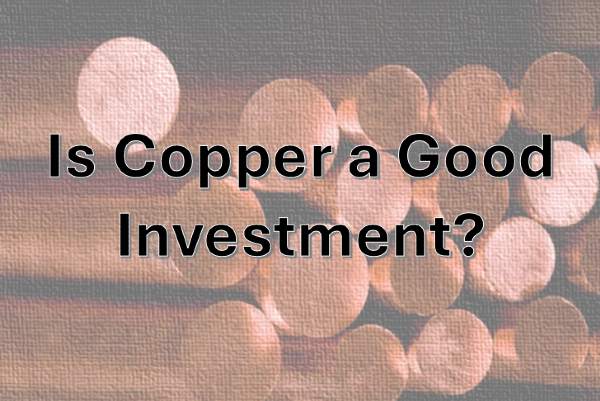












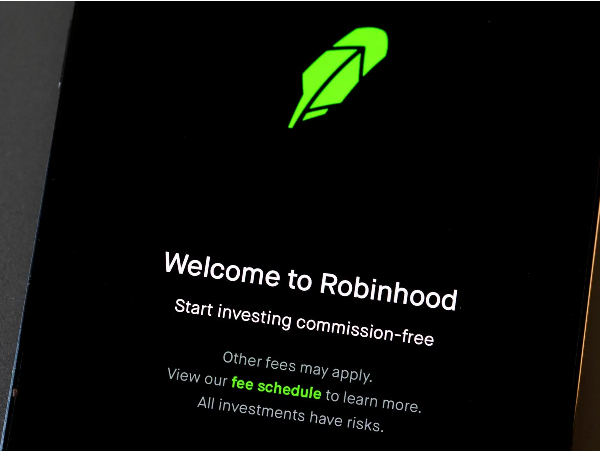



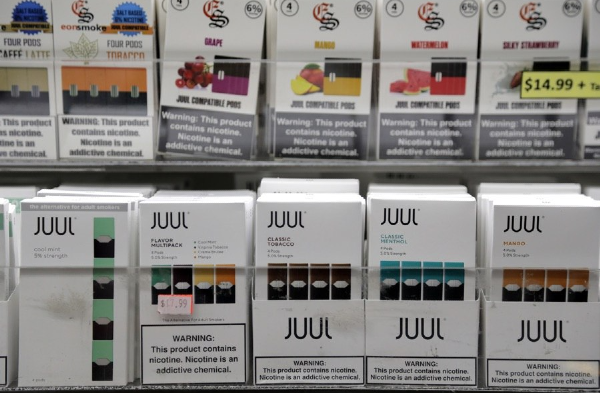
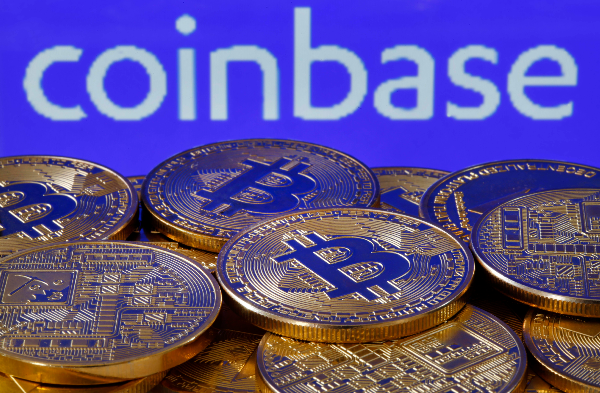
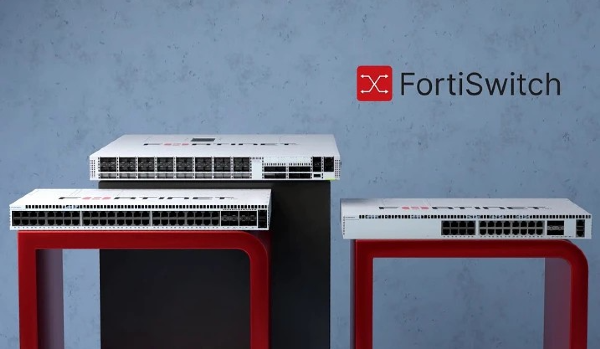
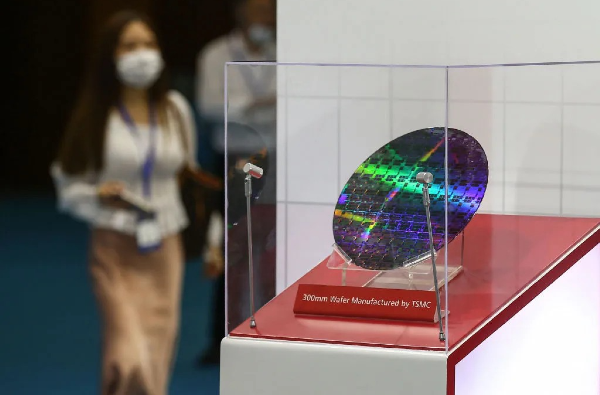
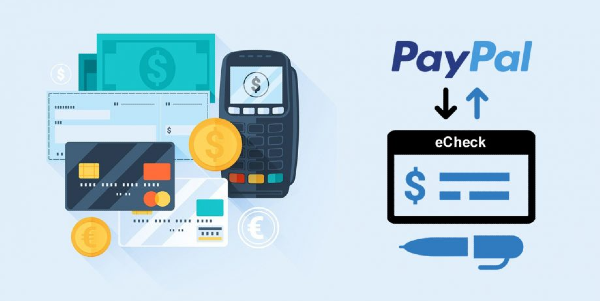








Copper stands out as a fundamental asset in the global economy, deeply embedded in everything from construction to cutting-edge technology. Unlike speculative commodities, its intrinsic value is tied to industrial growth, renewable energy expansion, and electrification—factors that drive consistent demand. Investors eye copper for its long-term potential, especially as infrastructure projects ramp up and supply constraints threaten availability. This article explores whether copper is a strong buy, how global demand impacts pricing, and the best investment strategies for those looking to capitalize on this essential material.
Understanding Copper’s Role in Global Markets
Copper isn’t just another commodity—it’s the backbone of modern infrastructure and a critical driver of global innovation. From towering skyscrapers to the intricate circuits in smartphones, its versatility makes it indispensable. But it’s not just about function; copper plays a strategic role in the world’s transition to renewable energy, powering electric grids, solar farms, and electric vehicles. As economies expand, demand surges, making copper a strong indicator of industrial growth and economic health. Investors tracking global trends recognize that copper’s importance isn’t fading—it’s strengthening.
The world’s biggest consumers of copper, including China, the U.S., and emerging markets, shape its trajectory. China, the epicenter of manufacturing and urban development, absorbs a massive portion of global supply, fueling demand with its relentless infrastructure projects. The U.S., with its push toward green energy and tech innovation, remains a key player in consumption. Emerging markets, from India to Latin America, are ramping up usage as they industrialize, tightening supply chains and driving up copper’s long-term value. For investors, these demand trends aren’t just numbers—they’re signals of where the market is headed next.
Historical Performance of Copper Investments
Copper’s price history is a rollercoaster—full of spikes, dips, and long-term trends that reveal its true strength as an investment. Over the past two decades, copper has seen explosive rallies during economic booms and sharp declines in downturns. The 2000s brought a commodities supercycle driven by China’s insatiable demand, pushing prices to record highs. Fast forward to the 2010s, and economic slowdowns, trade tensions, and fluctuating industrial demand cooled the rally. Then came the 2020s: a global pandemic, supply chain chaos, and green energy expansion—all factors that sent copper surging again. This metal thrives when economies grow and suffers when industries pause, making it a fascinating study in cyclical investment trends.
Stack copper up against gold, silver, or lithium, and you’ll see a different story for each. Gold plays defense—investors flock to it in uncertain times, while copper shines during economic expansions. Silver, though used industrially, often mimics gold’s movements rather than standing on its own as a purely industrial asset. Lithium, the rising star of EVs, has far more volatility, driven by tech innovation rather than broad infrastructure demand. Copper stands in its own league, acting as an economic barometer. Major price drivers include supply shocks from top-producing nations, evolving industrial needs, and macroeconomic shifts like inflation or currency fluctuations. It’s not just metal—it’s a reflection of the world’s economic health.
Supply and Demand Dynamics
Copper isn’t just another industrial metal—it’s the power grid’s secret weapon, the unsung hero of electrification, and the backbone of nearly every major industry. But here’s the real story: the world’s appetite for copper is only getting bigger, and production is struggling to keep up. Chile and Peru dominate global supply, cranking out massive quantities, but mining disruptions—from labor strikes to tightening regulations—can throw the market into chaos overnight. China, the biggest consumer, treats copper like an economic pulse check, stockpiling it aggressively to fuel its construction and tech ambitions. The U.S.? It’s a key player but far more of a consumer than a producer, relying on imports to sustain its green energy expansion. With supply bottlenecks already appearing, investors are paying attention—when copper shortages hit, prices can skyrocket.
On the demand side, copper is entering its golden era. EV manufacturers, renewable energy giants, and infrastructure developers are all racing to secure their share of the metal. Electric vehicles alone need three to four times more copper than traditional gas-powered cars, while solar and wind farms demand vast wiring networks to stay operational. Even old-school construction refuses to loosen its grip on copper demand, ensuring it remains one of the most consistently consumed metals in the world. But here's the kicker—while demand is surging, supply is stagnating. Mining challenges, regulatory barriers, and dwindling high-grade reserves mean future copper prices could climb higher than many investors anticipate. The question isn’t if copper will be a profitable play—it’s how soon it breaks out into the next major rally. Smart investors are already watching.
Investment Vehicles: How to Invest in Copper
Copper isn’t just something you throw into electrical wiring—it’s a powerhouse investment with multiple ways to play the game. The old-school method? Buying physical copper itself, but let’s be real—that’s impractical for most investors. You’d need secure storage, and unless you’re looking to stack copper bars like a pirate hoarding treasure, this route isn’t the easiest. Instead, financial instruments offer a much cleaner way to tap into copper’s potential. Futures contracts let traders speculate on price swings, while ETFs bundle exposure across multiple sources, offering liquidity without the headaches of direct ownership. For those who want a slice of copper without diving into hardcore commodities trading, ETFs are an efficient way to ride the wave.
Then there’s the high-stakes world of copper mining stocks—where investors can really capitalize on supply and demand shifts. Heavyweights like Freeport-McMoRan (FCX), Southern Copper (SCCO), and BHP Group (BHP) offer diversified exposure with strong production capacity. These stocks often move faster than copper prices, reacting to earnings reports, geopolitical events, and operational changes. But with big potential comes big risk—mine shutdowns, environmental regulations, and fluctuating ore grades can tank valuations. Futures contracts bring volatility but allow precise exposure, while ETFs smooth out some of the turbulence. No matter the approach, the key to investing in copper is understanding when supply bottlenecks and demand surges will swing prices in your favor. Smart investors don’t just chase copper—they position themselves before the market wakes up to its value.
Macroeconomic Factors Affecting Copper Prices
Copper doesn’t move in isolation—it rides the waves of the broader economy like a surfer navigating the tides. When inflation heats up, so does copper’s appeal. Investors see commodities as a hedge against rising prices, pushing copper demand higher. But here’s the catch—if central banks start hiking interest rates, borrowing gets expensive, construction slows, and copper demand softens. It’s a constant balancing act between inflation-driven investment and interest-rate-induced slowdowns. Timing is everything in this game.
Geopolitical risks? Oh, they love to stir the pot. Mining regulations, environmental policies, and trade wars can send copper markets into chaos. A sudden export restriction from a top producer like Chile or Peru? That’s enough to send prices soaring overnight. Global supply chains are fragile, and disruptions—whether from labor strikes, government intervention, or outright conflicts—can create shortages that make copper an investor’s dream. Miss these macro factors, and you’re missing half the equation.
Copper thrives in economic expansions and suffers during downturns—it’s one of the clearest real-world indicators of industrial momentum. When global GDP surges, copper demand follows, fueled by booming construction and tech innovation. But when recessions hit? Factories slow, infrastructure projects stall, and copper demand takes a hit. Smart investors watch economic cycles like hawks, knowing that getting in at the right time can make the difference between an average play and a massive win.
Sustainability & The Future of Copper Demand
If the world is moving toward clean energy, copper is driving the bus. Solar panels, wind turbines, electric vehicles—every single piece of green tech depends on copper wiring to function. The electrification trend isn’t just hype; it’s an inevitable shift, and copper is at the core of it. EV makers alone require four times more copper per vehicle than traditional gas-powered cars. That’s not a small increase—it’s a monumental shift in demand that could push copper prices to levels investors haven’t seen before.
But it’s not all about fresh mining. Recycling is stepping in as a game-changer, offering a way to meet demand without destroying the planet. The scrap copper market is growing, helping offset shortages and reducing environmental impact. Still, newly mined copper remains essential, and ESG (Environmental, Social, and Governance) considerations are shaping how companies operate. Miners that prioritize sustainability—through ethical sourcing, reduced emissions, and greener extraction methods—are seeing heightened investor interest. In today’s market, ESG isn’t just a checkbox—it’s a profit driver.
Risks & Challenges of Investing in Copper
Volatility is copper’s middle name, and it doesn’t play nice with impatient investors. Prices can swing dramatically based on supply disruptions, global demand cycles, and speculation. Copper futures see sharp movements, making them a high-risk, high-reward bet. If you’re not ready for rapid price shifts, stepping into copper markets can feel like stepping into a storm—exciting, but definitely not predictable.
Speculative trading, especially in futures markets, adds another layer of unpredictability. Traders betting on short-term movements can create exaggerated price swings, turning what should be a steady industrial asset into something resembling a rollercoaster. For long-term investors, patience is key—understanding when to ride the waves and when to sit tight separates winners from those who get shaken out by the turbulence.
And let’s not forget global crises. Pandemics, recessions, supply-chain disruptions—these events can flip copper markets overnight. When COVID-19 struck, copper demand initially tanked, only to surge once infrastructure projects ramped up post-lockdown. The metal’s resilience is undeniable, but navigating major global events requires foresight, agility, and a stomach for risk.
Expert Predictions & Investment Outlook
Analysts aren’t blind to copper’s potential—many see long-term upside, especially with the electrification boom. Price projections suggest copper could break past previous highs, particularly as EV and renewable energy markets expand. But timing matters. A short-term correction? Possible. A long-term structural bull market? Likely. Those in it for the long haul could see significant returns, assuming they weather the occasional storm.
Market sentiment right now is mixed. While some investors see copper as overextended after recent price jumps, others believe demand fundamentals will push it higher. Hedge funds and institutions have started allocating more toward commodities, a strong signal that copper is still in favor among big players.
So, is copper a long-term or short-term play? The answer depends on how you invest. Futures traders thrive on short-term swings, while mining stock investors and ETF holders look toward a broader trend. What’s undeniable is that copper isn’t going anywhere—it’s embedded in the future of global infrastructure and electrification. For investors who understand its cycles, it’s an opportunity waiting to be seized.
Conclusion
Copper isn’t just another metal—it’s an investment woven into the fabric of the global economy. Whether it’s fueling electrification, driving infrastructure growth, or reflecting macroeconomic trends, its role is undeniable. The real question isn’t if copper is a strong investment—it’s how smartly you position yourself. With supply challenges, booming demand, and evolving sustainability efforts, copper’s future is packed with opportunity. The investors who recognize its cycles, anticipate its catalysts, and act before the market catches on are the ones who’ll come out ahead.
Here's a table listing the copper-related stocks discussed, along with their ticker symbols and direct links for further research: